
Rockingham County is a county located in the U.S. state of Virginia. As of the 2020 census, the population was 83,757. Its county seat is the independent city of Harrisonburg.

Harrisonburg is an independent city in the Shenandoah Valley region of the Commonwealth of Virginia in the United States. It is also the county seat of the surrounding Rockingham County, although the two are separate jurisdictions. At the 2020 census, the population was 51,814. The Bureau of Economic Analysis combines the city of Harrisonburg with Rockingham County for statistical purposes into the Harrisonburg, Virginia Metropolitan Statistical Area, which had an estimated population of 126,562 in 2011.
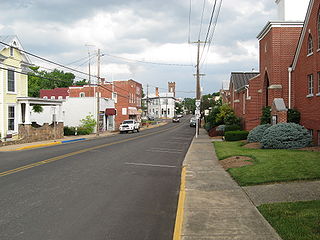
Dayton is a town in Rockingham County, Virginia, United States. The population is 1,530 as of the 2010 census. It is included in the Harrisonburg, Virginia Metropolitan Statistical Area.
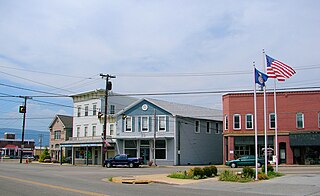
Elkton is an incorporated town in Rockingham County, Virginia, United States. It is included in the Harrisonburg Metropolitan Statistical Area. The population was 2,762 at the 2010 census. Elkton was named for the Elk Run stream.

Ananias Davisson was a singing school teacher, printer and compiler of shape note tunebooks. He is best known for his 1816 compilation Kentucky Harmony, which is the first Southern shape-note tunebook. According to musicologist George Pullen Jackson, Davisson's compilations are "pioneer repositories of a sort of song that the rural South really liked."
Shenandoah Valley Regional Airport is in Weyers Cave, Virginia, United States, 12 miles (19 km) northeast of Staunton. It is used for general aviation and is served by one airline, subsidized by the Essential Air Service program.
The Rockingham County Baseball League is a summer baseball league in Rockingham County, Virginia and neighboring areas. It was founded in 1924, and has included teams from across Rockingham County and up and down the Shenandoah Valley. As of 2023, the league has 8 teams and has a 28-game regular season schedule where every team plays each other 4 times. The first round of the playoffs is the best out of three games, the second round is best out of five games, and the third and final round is best out of seven games.
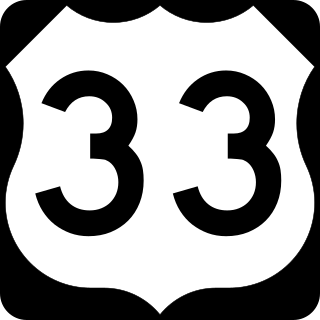
U.S. Route 33 is a part of the U.S. Highway System that runs from Elkhart, Indiana to Richmond, Virginia. In Virginia, the U.S. Highway runs 135.60 miles (218.23 km) from the West Virginia state line near Rawley Springs east to its eastern terminus at SR 33 in Richmond. US 33 is the primary east–west highway of Rockingham County, which lies in the Shenandoah Valley. The highway connects the independent city of Harrisonburg, the town of Elkton, and an entrance to Shenandoah National Park. East of the Blue Ridge Mountains, US 33 connects the Piedmont communities of Stanardsville, Gordonsville, and Louisa. The U.S. Highway is a major suburban and urban route in the Richmond metropolitan area. Within Richmond, US 33 runs concurrently with US 250. SR 33 continues from US 33's eastern terminus as a state-numbered extension of the U.S. Highway that connects Richmond with Virginia's Middle Peninsula.

State Route 211 is a primary state highway in the U.S. state of Virginia. The state highway runs 5.63 miles (9.06 km) from SR 42 in Timberville east to Interstate 81 (I-81) and U.S. Route 211 in New Market. SR 211 is a state-numbered westward extension of US 211.

State Route 253 is a primary state highway in the U.S. state of Virginia. Known as Port Republic Road, the state highway runs 12.18 miles (19.60 km) from U.S. Route 11 in Harrisonburg east to US 340 near Port Republic. SR 253 is a northwest–southeast highway that connects Harrisonburg with Cross Keys and Port Republic in southeastern Rockingham County. The state highway also provides access to portions of James Madison University on either side of Interstate 81 (I-81). SR 253 is maintained by the Virginia Department of Transportation except for the portion in the independent city of Harrisonburg, which is municipally maintained.
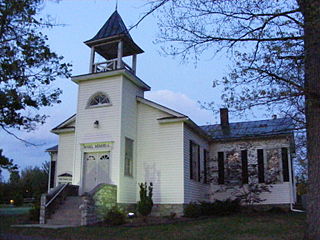
Mabel Memorial Chapel is located in Harrisonburg, Virginia and was built in 1898. It is located in the former village of Chestnut Ridge.
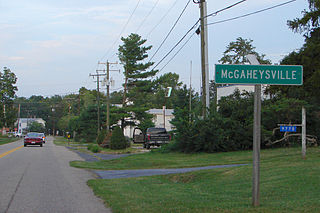
McGaheysville is a Census-designated place located in Rockingham County, in the U.S. state of Virginia. It is located along U.S. Route 33 between Penn Laird and Elkton, and sits at the base of the Massanutten.
Smith Creek is a 35.5-mile-long (57.1 km) tributary stream of the North Fork of the Shenandoah River in the Shenandoah Valley of Virginia. Its watershed comprises 106 square miles (270 km2) within Shenandoah and Rockingham counties on the western slope of the Massanutten Mountain ridge. Its headwaters lie in Rockingham County just north of Harrisonburg, and its confluence with the North Fork of the Shenandoah River is located just south of Mount Jackson.

With residency beginning in 1727, Adam Miller (Mueller) is recognized as the first permanent white settler in the Shenandoah Valley of Virginia, US. Born in 1703 in Schriesheim, Germany, Miller immigrated to America as a young married man, settling in Lancaster County, PA in 1724.

Linville is a Census-designated place located in Rockingham County, in the U.S. state of Virginia. It is located 6 miles north of Harrisonburg, Virginia. It is for the first time listed as CDP for the United States Census 2020. It contains the Linville United Church of Christ.
The Virginia Old Order Mennonite Conference, also called Cline Mennonites or Cline-Showalter group, is an Old Order Mennonite group to use horse-drawn carriages for transportation. It separated from the Virginia Mennonite Conference in 1901. The members of the group speak English only, unlike almost all other horse and buggy Old Order Mennonite groups, who speak Pennsylvania German as their first language. In recent years the group sometimes uses the name "Riverdale Old Order Mennonite Church".
The John Dan Wenger Mennonites are an Anabaptist Christian denomination that belongs to the Old Order Mennonites. They use horse and buggy transportation and are mainly located in Virginia. Under the leadership of Bishop John Dan Wenger, they separated from the Virginia Old Order Mennonite Conference in either 1952 or 1953.
John L. Heatwole (1948–2006) was an artist, historian, tour guide, and storyteller who gathered and preserved hundreds of oral history and folklore stories from the Shenandoah Valley and throughout Virginia and West Virginia through writings, lectures, and radio programs.
Bonnie Lineweaver Paul is a Virginia lawyer and Republican politician, who represented a district in the Blue Ridge Mountains in the Virginia House of Delegates for two terms.
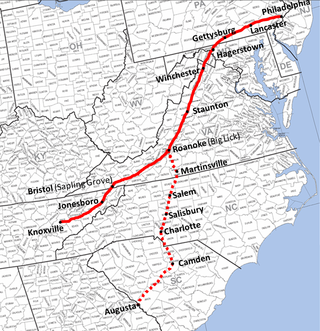
The Shenandoah Valley region of Virginia and parts of West Virginia is home to a long-established German-American community dating back to the 17th century. The earliest German settlers to Shenandoah, sometimes known as the Shenandoah Deitsch or the Valley Dutch, were Pennsylvania Dutch migrants who arrived from southeastern Pennsylvania. These German settlers travelled southward along the Great Wagon Road. The Pennsylvania Dutch are the descendants of German, Swiss, and Alsatian Protestants who began settling in Pennsylvania during the 1600s. These German refugees had fled the Rhineland-Palatinate region of southwestern Germany due to religious and political persecution during repeated invasions by French troops. From the colonial period to the early 1900s, people of Germanic heritage formed the social and economic backbone of the Shenandoah Valley. The majority of German settlers in the valley belonged to Anabaptist denominations such as the Mennonites, the Dunkers, and others. Smaller numbers were German Catholics or German Jews. The earliest European settlers of the Shenandoah Valley were the Germans, who mostly settled in the northern portions of the valley, and the Scotch-Irish who mostly settled in the southern portions of the valley. The German language was commonly spoken in Shenandoah until World War I when anti-German sentiment resulted in many German-Americans abandoning their language and customs in order to assimilate into the cultural mainstream.
















